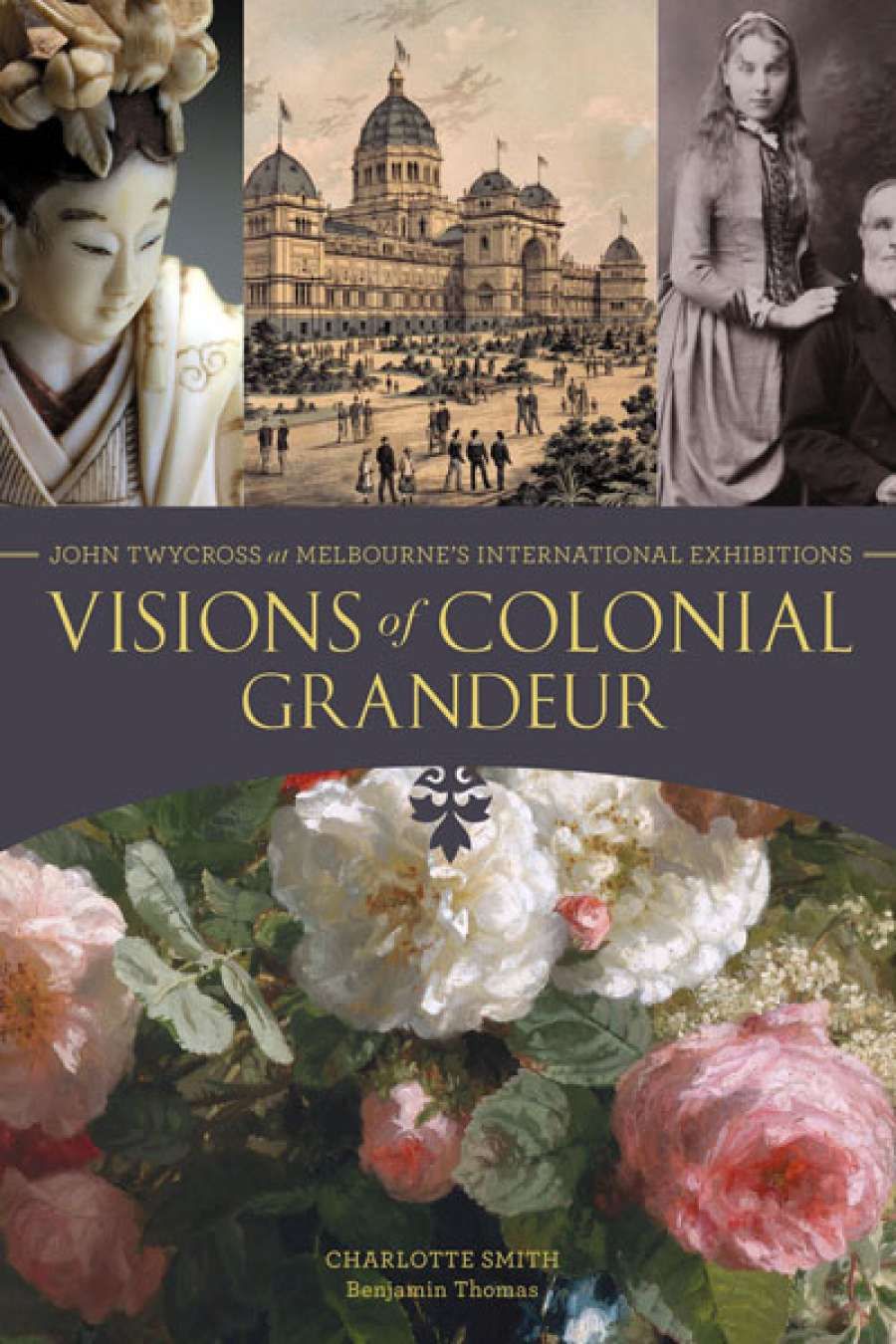
- Free Article: No
- Contents Category: Art
- Custom Article Title: Christopher Menz reviews 'Visions of Colonial Grandeur' by Charlotte Smith and Benjamin Thomas
- Review Article: Yes
- Online Only: No
- Custom Highlight Text:
Not many substantial private collections of art and decorative arts in Australia have remained intact from the nineteenth century. John Twycross (1819–89) was one of Melbourne’s early art collectors, and his collection has proved to be an exception. Twycross, lured there by the gold rush, made his money as a merchant in Melbourne in the middle of the nineteenth century. He began collecting art during the 1860s and became a major lender to the National Gallery of Victoria’s historic 1869 loan exhibition. He also spent heavily at the Melbourne International Exhibition of 1880 and even made a few purchases from the Melbourne Centennial Exhibition of 1888, the year before he died. He was also a lender to the 1888 exhibition. Some 200 of the works that Twycross purchased at these exhibitions have remained together. In 2009 a descendant donated them to Museum Victoria, which is custodian of the Royal Exhibition Building.
- Book 1 Title: Visions of Colonial Grandeur
- Book 1 Subtitle: John Twycross at Melbourne’s International Exhibitions
- Book 1 Biblio: Museum Victoria, $39.95 pb, 168 pp
Tywcross bought a range of works, both paintings and decorative arts. His taste was eclectic; in addition to the more conventional European paintings, glass, and ceramics, he purchased Japanese, Chinese, and Indian objects – ceramics, carved ivory and stone, textiles, lacquer ware, and furniture. They form the subject of this fascinating volume, which examines Tywcross’s rise to riches in booming Melbourne and his collecting against the background of the development of Melbourne and that nineteenth-century phenomenon, the international exhibition.
This is a deftly contextualised account, presented with much interesting new information and original research. We are also reminded just what colossal spectacles nineteenth-century exhibitions were: the 1880 exhibition displayed 32,000 objects from thirty-three nations; the 1888 one covered an area of fifteen hectares. On both occasions, the vast permanent exhibition building was supplemented by extensive annexes.


Comments powered by CComment